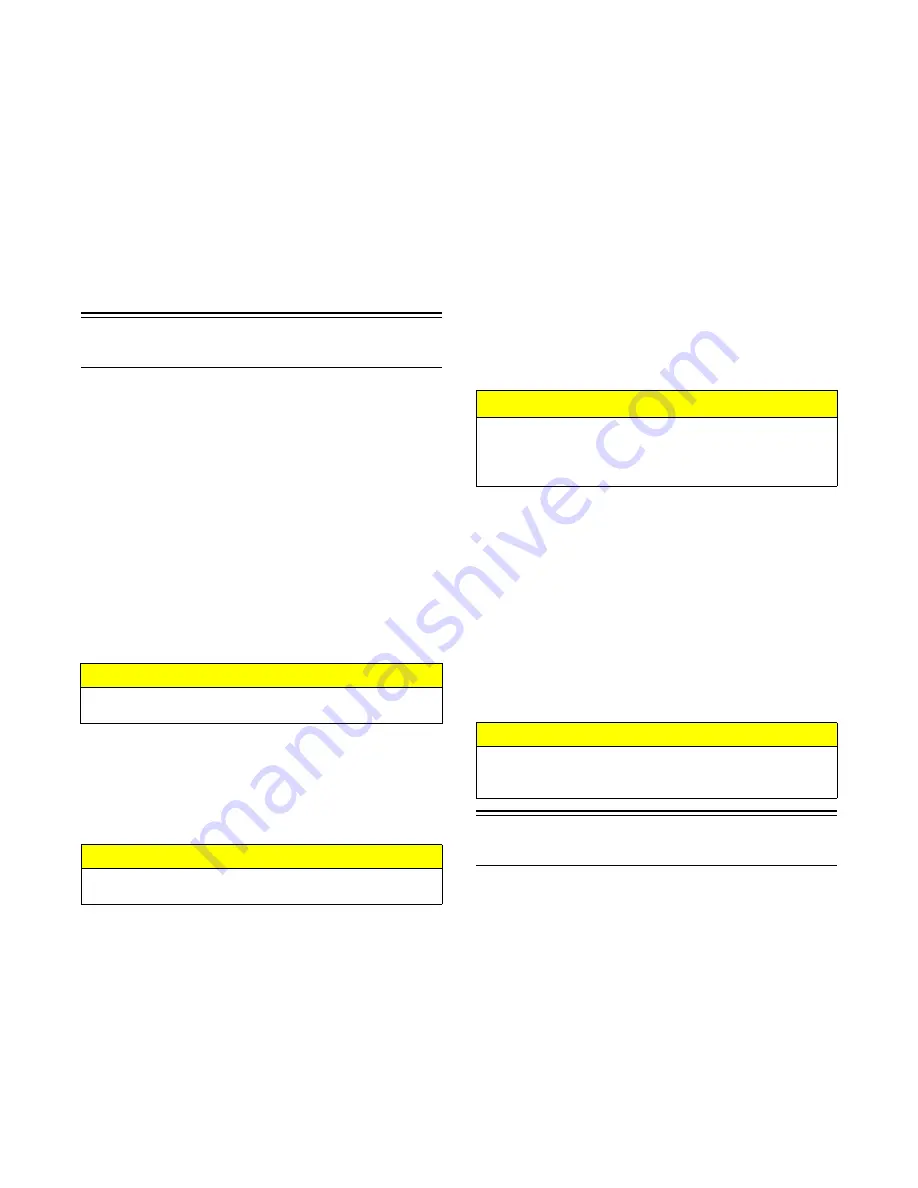
5
Durometer is a measurement of how hard a rubber is. The
lugs on most tracks range between 60 and 85 durometer.
On the durometer scale, the higher the number, the harder
the lugs. For riding in deep powder snow, a softer durom-
eter track works best. The softer rubber allows the track
to “give” a little and pack the snow creating lift rather
than digging its way straight down. When hill-climbing,
the harder lug of an 80 durometer track works the best
due to penetrating the hard snow creating more bite.
Some tracks come with a dual durometer rating, such as a
track with a 80/60 durometer rating. The lugs on this track
are 80% 80 durometer rubber, and the top 20% is made of
the softer 60 durometer rubber. This track is designed to be
a good all-around track for riding mostly in deep powder
snow but can climb the occasional hard snow hill.
Preparation For Storage
Prior to storing the snowmobile, it must be properly ser-
viced to prevent corrosion and component deterioration.
1. Clean the seat cushion with a damp cloth and Arctic
Cat Vinyl Protectant.
2. Clean the snowmobile thoroughly by hosing dirt, oil,
grass, and other foreign matter from the skid frame,
tunnel, hood, and belly pan. Allow the snowmobile
to dry thoroughly. DO NOT get water into any part
of the engine.
3. Place the rear of the snowmobile up on a shielded
safety stand; then start the engine and allow to idle.
Spray an Engine Storage Preserver into the intakes
until the engine exhaust starts to smoke heavily or
until the engine starts to drop in RPM. Turn engine
off. Install the intake boots.
4. Plug the exhaust system outlet with a clean cloth.
5. With the ignition switch in the OFF position:
A. Disconnect the high tension leads from the spark
plugs; then remove the plugs, connect them to the
leads, and ground them on the cylinder heads.
B. Pour 29.5 ml (1 fl oz) of SAE #30 petroleum-based
oil into each spark plug hole and pull the recoil
starter handle slowly about 10 times.
C. Install the spark plugs and connect the high tension leads.
6. Fill the gas tank to its rated capacity; then add Arctic
Cat Fuel Stabilizer to the gas tank following direc-
tions on the container for the stabilizer/gasoline
ratio. Tighten the gas tank cap securely.
7. With the snowmobile level, check the lubricant level
in the chain case. If low, add chain lube through the
fill plug hole.
8. Remove the drive belt from the drive clutch/driven
clutch. Lay the belt on a flat surface or slide it into a
cardboard sleeve to prevent warping or distortion
during storage; then clean and inspect the drive
clutch and driven clutch.
9. Apply light oil to the upper steering post bushings and
to the shafts of the shock absorbers; then lubricate the
rear suspension with an all-temperature grease.
10. Tighten all nuts, bolts, and cap screws making sure all
calibrated nuts, bolts, and cap screws are tightened to
specifications. Make sure all rivets holding the compo-
nents together are tight. Replace all loose rivets.
11. Clean and polish the hood, console, and chassis with
Cat Cleaner. DO NOT USE SOLVENTS. THE PRO-
PELLENT WILL DAMAGE THE FINISH.
12. On electric start models, disconnect the battery
cables making sure to disconnect the negative cable
first; then clean the battery posts and cables.
13. If possible, store the snowmobile indoors. Raise the
track off the floor by blocking up the back end mak-
ing sure the snowmobile is secure. Loosen the track
adjusting bolts to reduce track tension. Cover the
snowmobile with a machine cover or a heavy, venti-
lated tarpaulin to protect it from dirt and dust.
14. If the snowmobile must be stored outdoors, position
the snowmobile out of direct sunlight; then block the
entire snowmobile off the ground making sure the
snowmobile is secure. Loosen the track adjusting
bolts to reduce track tension. Cover with a machine
cover or a heavy, ventilated tarpaulin to protect it
from dirt, dust, and rain.
Preparation After Storage
Taking the snowmobile out of storage and correctly pre-
paring it for another season will assure many miles and
hours of trouble-free snowmobiling. Arctic Cat recom-
mends the following procedure:
1. Clean the snowmobile thoroughly. Polish the exterior
of the snowmobile.
2. Clean the engine. Remove the cloth from the exhaust
system. Check exhaust system and air silencer for
obstructions.
3. Inspect all control wires and cables for signs of wear
or fraying. Replace if necessary. Use cable ties or
tape to route wires and cables away from hot or rotat-
ing parts.
CAUTION
Do not run the engine without the belt guard in place
and secured.
CAUTION
Never crank the engine over without grounding the
spark plugs. Damage to coils and/or ECM may result.
CAUTION
Sealed batteries require charging if left for extended
non-start periods. Arctic Cat recommends trickle
charging once a month. Follow the manufacturer’s
instructions and cautions.
CAUTION
Avoid storing in direct sunlight and using a plastic
cover as moisture may collect on the snowmobile caus-
ing corrosion.
Summary of Contents for M 8000
Page 1: ...www arcticcat com SERVICE MANUAL www arcticcat com...
Page 42: ...41 500cc_2A_15...
Page 50: ...49 600_14_2...
Page 58: ...57 800_12_2...
Page 155: ...154 Troubleshooting Servomotor SERVO1A16...
Page 156: ...155 SERVO2rv16...
Page 193: ...192 0747 414 M 141 High Country Models...
Page 209: ...208 NOTES...
Page 210: ...Printed in U S A Trademarks of Arctic Cat Inc Thief River Falls MN 56701 p n 2260 847...







































